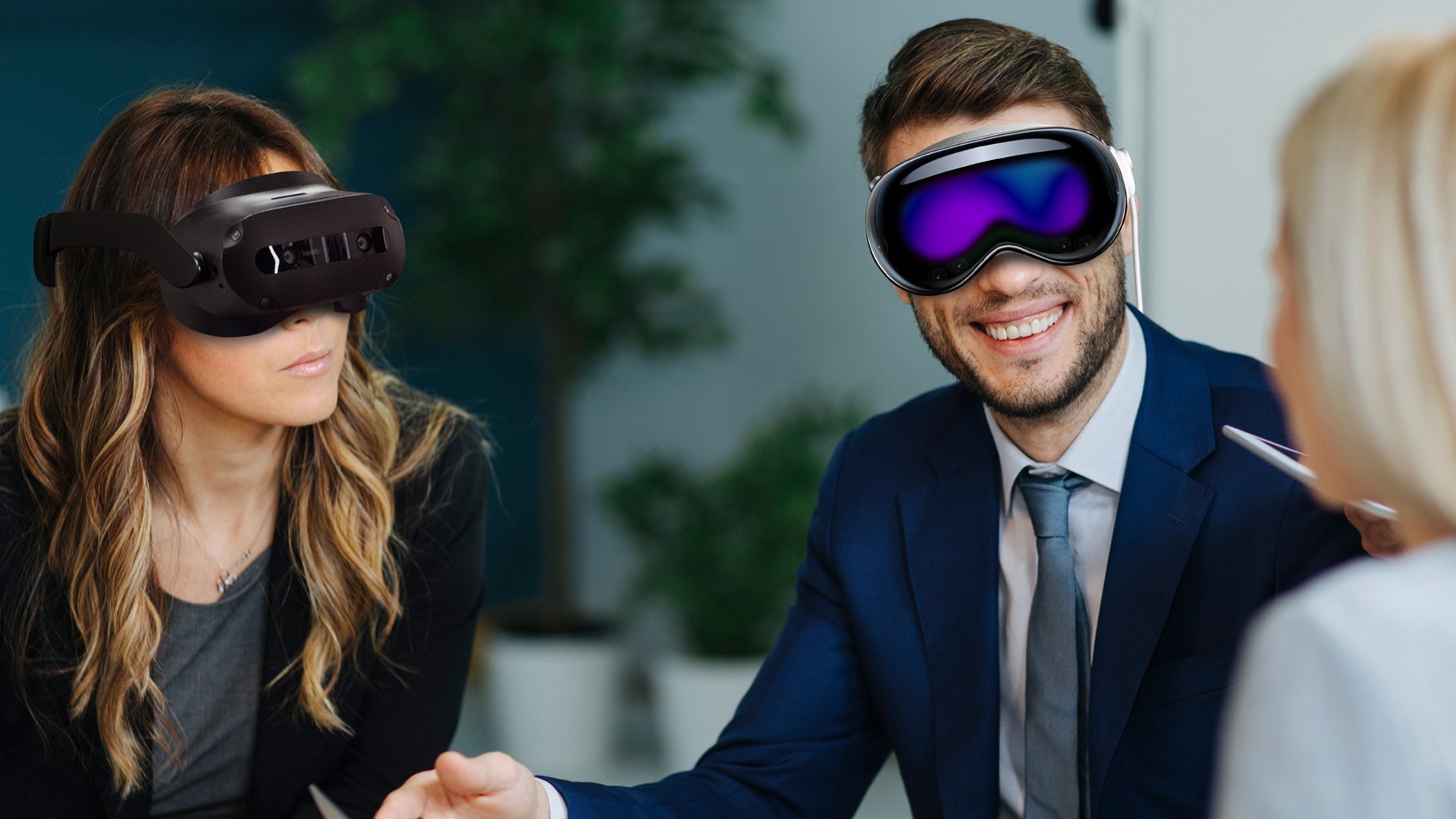Spatial Learning: The New Frontier in Corporate Education
Learn how innovative vendors and service providers are shaping tomorrow’s workplace.
Spatial computing is 2024's hot tech topic. Alongside emerging technology drivers like genAI, spatial computing solutions—including AR/VR/MR technologies—are changing the workplace today.
Vendors and solution providers work closely with enterprise firms to discover new and exciting use cases for immersive technology; for use cases like immersive learning, remote guidance, and simulations.
But why should businesses consider spatial computing solutions? Business leaders and workers are busy daily, so getting an established workforce to participate in XR use cases may seem challenging.
While there is a learning curve for XR in the enterprise, the benefits are well worth the time investment.
Most notably, learning and training use cases are proving the wealthiest investment space for companies interested in XR. Already many firms are getting ahead by retaining knowledge and upskilling workers thanks to spatial learning solutions.
Spatial Computing, a Game-Changer for Enterprise Learning and Training
The working world needs skilled workers, especially those with unique skills crucial in specific working environments.
XR allows knowledge to spread far, and wide, and extensive digital catalogues of in-depth [virtual] hands-on training assets ensure workers can practise skills year after year.
Virtual, augmented, or mixed reality solutions are moulding to suit various sectors, from aviation to retail, healthcare, public transport, and more. Highly customisable XR learning solutions are agnostic and can fit any working environment.
Depending on the use case, immersive learning solutions can enhance or sometimes replace traditional digital and in-person training. For example, businesses can leverage repeatable virtual training scenarios to save money, match sustainability goals, and lower worker risk.
Moreover, spatial learning solutions allow businesses to leverage various emerging technologies, such as digital twins, virtual collaboration tools, and smart glasses, which provide real-time, interactive, persistent, and synchronous workflows.
Technological advancements are enabling businesses to solve increasingly complex problems virtually or via simulation—breaking down traditional barriers and bringing software agility to physical operations.
Additionally, spatial training data can move between 2D and 3D data sets, from SAP systems to LIDAR scans and 3D CAD/CAM models. Businesses leveraging spatial learning solutions can unify and consolidate sometimes sensitive data, therefore providing a comprehensive digital resource-as well as giving new value to pre-existing training resources.
The link to the enterprise
Spatial computing is here to stay in the enterprise. Due to a more established presence, immersive learning solutions are a great starting point for businesses to cement a dedication to XR with immediate positive effect on its operations.
Businesses with appropriate use cases and an understanding of human/learner behaviours will ensure success.
The technology is new, so XR still retains a "wow factor" that generates initial interest. However, to maintain engagement with an immersive programme—in this case, spatial learning/training—teams must understand and overcome onboarding learning curves.
XR adopters today can also correctly leverage spatial learning solutions by understanding proper definitions of spatial learning objects, data collection, and experiences. This allows a team to deploy a training program and measure its success.
Adopters must understand the importance of analyzing and measuring expected learner outcomes to discover the effectiveness of a virtual environment or asset. Because this creates presentable and applicable data that improves the effectiveness of immersive learning.
Today’s benefits
Spatial computing is here to stay. As noted, Apple's big market push with Vision Pro made audiences turn heads—even those outside the AR/VR/MR cultural sphere.
Thanks to the recent fuel added to the XR fire, spatial computing solutions are finding a home in preexisting workflows.
Firms like S&P Global use spatial learning services today to make enterprise training accessible, engaging, and effective; showing how a company can easily overcome perceived adoption hurdles.
S&P Global overcame monetary constraints and technology barriers to show internal and external stakeholders how XR is more powerful than traditional learning tools.
The firm partnered with ARuVR to leverage spatial computing, which allowed it to solve real-world problems, including securing hardware-agnostic digital learning, creating bespoke virtual learning content, and connecting dispersed workers. This led to increased engagement and knowledge transfer across 2,500 workers.
The emerging opportunities
The market is quickly growing. Apple is not the only player in the hardware game. Vendors such as Lenovo, Meta, Pico, HTC VIVE, and countless others offer competitive headset products for the enterprise market.
For example, Lenovo is scaling its enterprise-focused ThinkReality VRX headset as a powerful technology that leverages Qualcomm’s Snapdragon XR2+ Gen 1 chipset, providing experiences for VR training, collaboration, and innovation.
Hardware is a large contributor to businesses' engagement with XR. If a hardware onboarding session is successful, then adoption of revolutionary spatial applications should soon follow.
The various hardware vendors are creating a healthy product market. On the other hand, immersive service providers are building interoperable software solutions that work across devices - avoiding a museum of headsets by ensuring most devices are compatible with the latest learning solutions. Therefore, providing learning for all, unbounded by any constraint.
The options for enterprise-grade spatial learning are only limited by the imagination and determination of a business.
Immersive learning appears to gain increased usability and effectiveness each coming month; with that comes even more opportunities for those innovative enterprise adopters taking steps towards the future of work.


